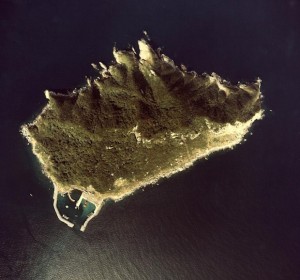
The island of Okinoshima in the Sea of Japan has been recommended for registration on the list of World Heritage sites by a preliminary UNESCO review panel.
If the recommendation is finalized at a UNESCO meeting in July this year, the sacred island and its nearby reefs will become the 21st site in Japan to receive the honor.

Japan and its tourism industry is obsessed with UNESCO World Heritage sites, a fascination driven by a highly successful TV show. While other countries boast many more registered sites, locals are rarely aware of this. In Japan, however, UNESCO World Heritage has become a major brand and is exploited to entice visitors.
Mount Fuji and its surrounding area was added in 2013 to much media fanfare. In 2014, Japanese cuisine (washoku) was also designated an intangible cultural heritage. And after a long campaign, the National Museum of Western Art in Ueno, Tokyo, was added to the list of World Heritage sites as part of a collection of the work of its architect, Le Corbusier.
The choice of Okinoshima, which lies within Fukuoka Prefecture, is not without controversy. The island does not allow women visitors and its location is in the waters between Japan and the Korean peninsula, which also contain disputed territory.
The review panel also did not accept four other proposed Japanese sites, which has angered the Agency for Cultural Affairs. The government now faces a dilemma of whether to continue pushing for all the sites to be registered or to drop the other four and focus only on Okinoshima.
The shrine of Munakata Taisha Okitsumiya on the island was used for prayer rituals during Japan’s exchanges with the Asian continent over 1,000 years ago. As such, it serves as a poignant symbol of inter-cultural relations but the recommendation comes at a time of heightened tensions in the region and while the ghosts of the war continue to haunt diplomacy.
Japan has temporarily withheld its funding from UNESCO this year in an attempt to block records related to Korean comfort women from being registered as part of UNESCO’s Memory of the World. It also delayed payment of its contribution in 2016 in protest after the Chinese government successfully requested the registration of Nanjing Massacre records to the Memory of the World.


















